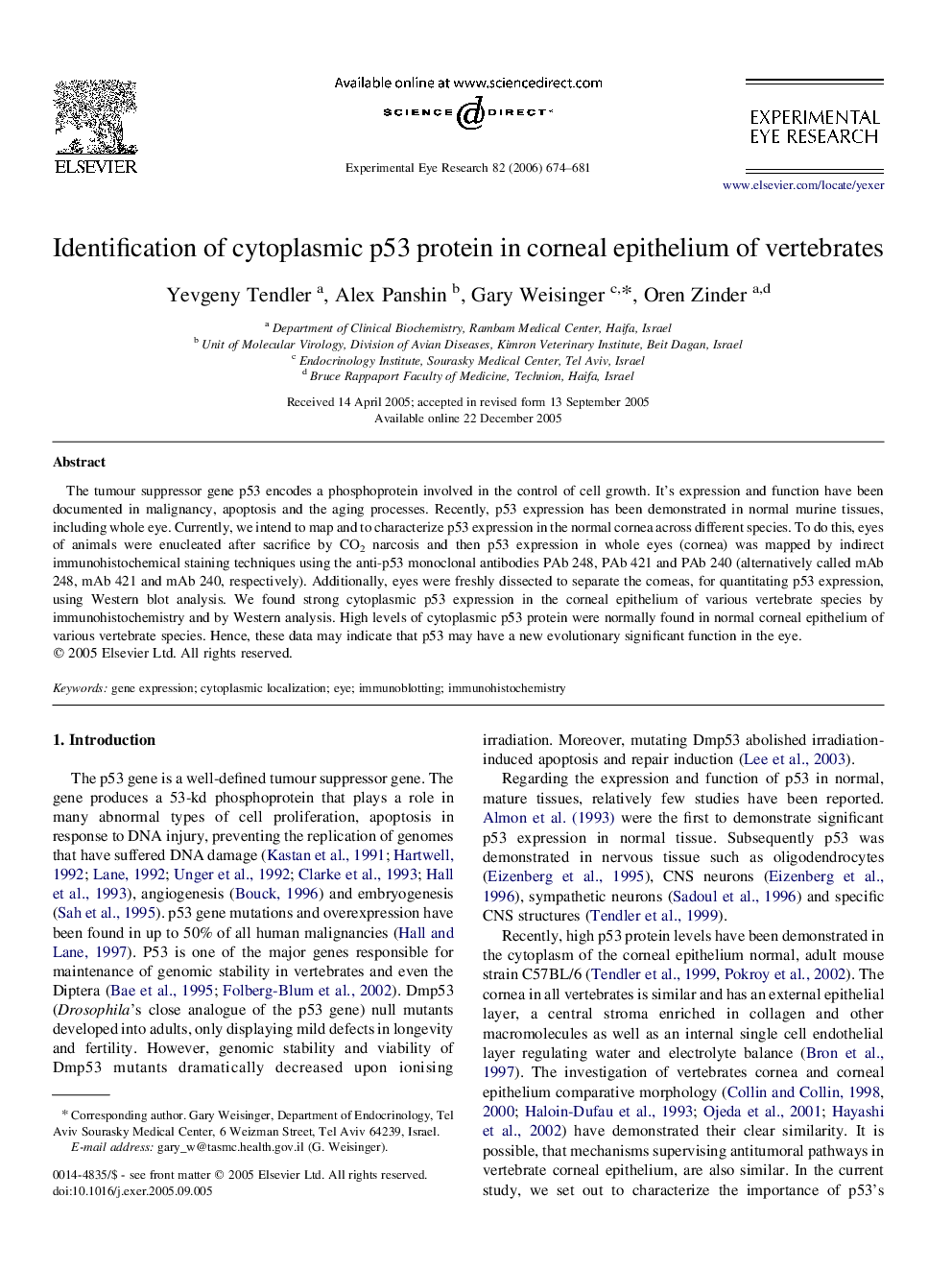| Article ID | Journal | Published Year | Pages | File Type |
|---|---|---|---|---|
| 4012613 | Experimental Eye Research | 2006 | 8 Pages |
The tumour suppressor gene p53 encodes a phosphoprotein involved in the control of cell growth. It's expression and function have been documented in malignancy, apoptosis and the aging processes. Recently, p53 expression has been demonstrated in normal murine tissues, including whole eye. Currently, we intend to map and to characterize p53 expression in the normal cornea across different species. To do this, eyes of animals were enucleated after sacrifice by CO2 narcosis and then p53 expression in whole eyes (cornea) was mapped by indirect immunohistochemical staining techniques using the anti-p53 monoclonal antibodies PAb 248, PAb 421 and PAb 240 (alternatively called mAb 248, mAb 421 and mAb 240, respectively). Additionally, eyes were freshly dissected to separate the corneas, for quantitating p53 expression, using Western blot analysis. We found strong cytoplasmic p53 expression in the corneal epithelium of various vertebrate species by immunohistochemistry and by Western analysis. High levels of cytoplasmic p53 protein were normally found in normal corneal epithelium of various vertebrate species. Hence, these data may indicate that p53 may have a new evolutionary significant function in the eye.
